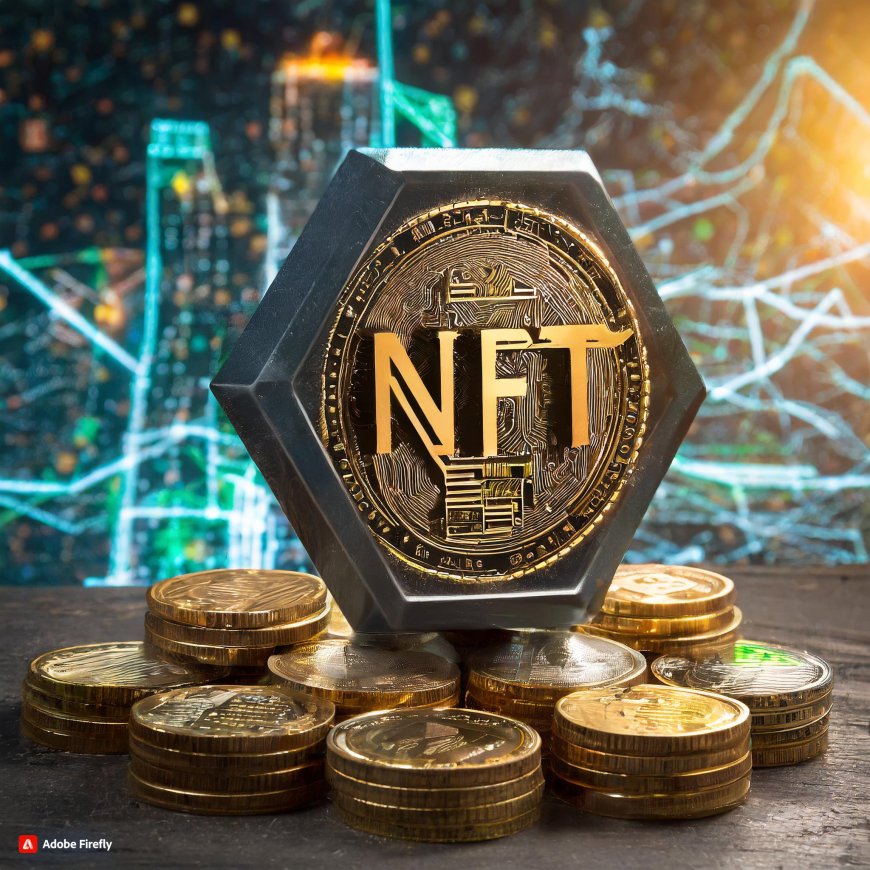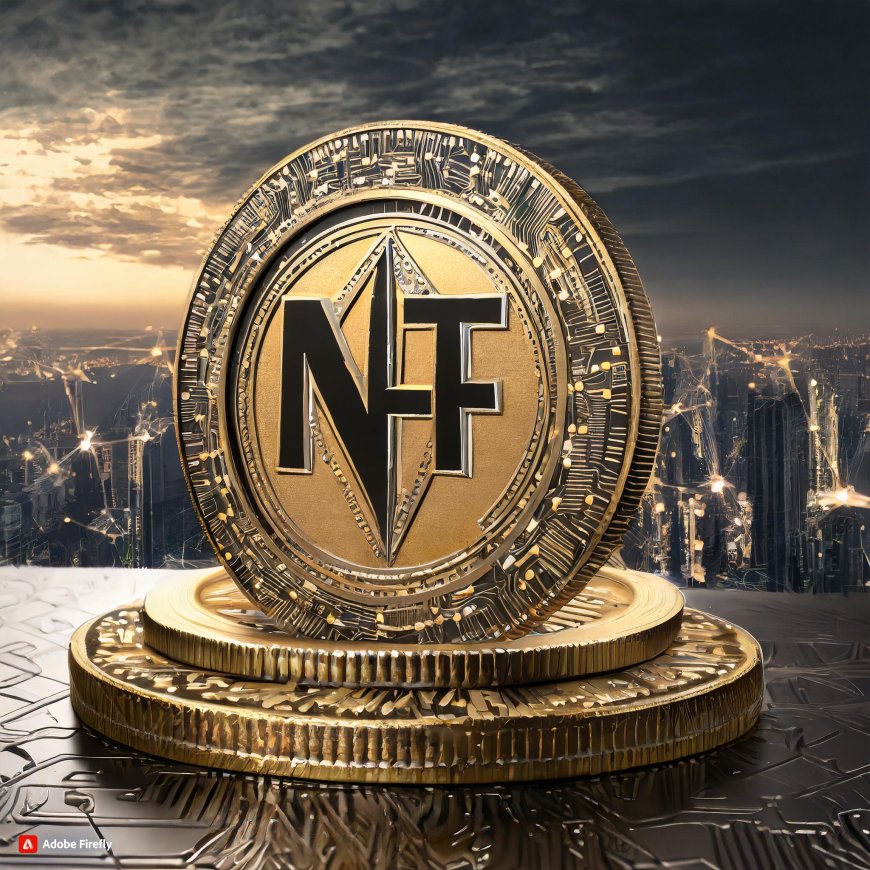Non-Fungible Tokens
Non-fungible tokens (NFTs) are unique digital assets that represent ownership or proof of authenticity of specific items, such as digital art, music, videos, or virtual real estate.

NFTs, non-fungible tokens, have been spreading all over the digital world very quickly through their unique way of purchase, sale, and transaction of digital assets. On the surface, the NFT craze may seem to be a simple concept, but is that really the case with a closer look? In the course under discussion we will look at the NFTs and their basic notions- from their beginning to its features and tendencies in future.
It is NFTs, the abbreviation for Non-Fungible Tokens, that is going to dominate this section.

What are NFTs?
NFTs are the digital tokens, which are unique by design and their primary purpose is to guarantee the ownership or proof of authenticity of a particular digital asset, such as arts, videos, music, or even virtual reality. However, contrary to exchangeable and interchangeable cryptocurrencies such as Bitcoin and Ethereum, NFTs have particular custom property that cannot be imitated or same as the other the other one.
How do NFTs work?
NFTs are the technologies that use blockchain technology to develop a type of ledger that contains a digital record of interactions between the users of the network. When a digital asset is purchased through blockchain, the ownership and transaction history of NFT is tracked in the blockchain. Its transparency and immutability attributes a proof of ownership unparalleled, as a result, nobody can tamper or fabricate the records of transactions and/or ownership.
History of NFTs

Origins of NFTs
NFT as a concept is certainly an early offshoot from the point when blockchain technology was introduced to the mainstream. But the widespread recognition of this concept was announced with projects like CryptoKitties in 2017. The digital assets gave its users the chance to purchase, sell, and breed virtual felines which in each case were accompanied with its own unique NFT.
The most important moments in an NFT development spread.
Since then, NFTs are to comprise a great variety of digital assets with such examples as art, music and many other things including virtual real estate and even some tweets. In 2021, considerable traditional artists and celebrities have turned to NFT technology and now make millions selling their artworks at auction. This groundbreaking sales and widespread adoption had pushed the art world history to a new level.
How to Create NFTs

Choosing a platform
To make NFTs, it is first which one is most suitable suitable for NFT creation and trade such as OpenSea, Rarible, and Foundation. Many different sites have their own collections of tools and fees to help you get the best returns on your investments. So, the first step should be to take more time to research and compare before starting any investments.
Creating digital assets
After you determine the right platform for your digital assets (which could be your artwork, music, video, or collectibles) you can start to create and upload assets of yours into it. It is must to provide yourself with the specified rights to the content you are turning into NFT to make sure there is the absence of copyright issues.
Minting NFTs
After putting your digital assets on the web, you will then try to mint them as NFTs, which is making and unique token(example of currency) on the blockchain representing ownership of the assets. Usually there is a one-off fee aka minting cost (the cost may fluctuate between platforms and file size).
Buying and Selling NFTs

Navigating NFT marketplaces
There are plenty of virtual markets exiting where you can buy, sell, and exchange NFT's and also these markets come with own communities and assortment of virtual assets. Major market places such as OpenSeas, Nifty Gateways, and SuperRare are among front-runners at the moment, but as NFT market keeps evolving, additional platforms pop up on a regular basis.
For factors influencing NFT purchasing, the factors to consider are:
Please, consider the need for rarity, uniqueness, and authenticity of the digital asset while NFTs buying. Many nfts are being released with bonus perks or special offers including access to limited or exclusive content, which may cause their price to go up.
Selling NFTs: Suggestions and insured approaches
If you are gonna sell an NFT, you should market your asset(s) to appeal to buyers get their attention, to enlarge the possibility of having some buyers. This can be done by posting your work on the social media networks, collaboration work with other historical artists or creators or selling your work online in the online auctions and events.
Legal and Ethical Considerations

These two issues are on copyright protection and intellectual property.
The NFTs copyright violation or intellectual property robbery is one of the most pressing dilemmas that accompany non-fungible tokens. Understanding one’s rights and responsibilities when minting and selling NFTs is the primary step for creators to prevent any legal issues in the process.
Environmental impact of NFTs
NFT environment is also affected by the same problem that is a high carbon footprint what blockchain technology. This whole activity of coining and trading of NFTs carries with it immense amount of computational power; which would ultimately lead to the concern about carbon emission as well as sustainability.
Scams and fraud as well within the NFT realm
The NFT market, similar to any newly emerged market, is vulnerable to fraud and scams too. As long as you're vigilant and careful, when buying, selling, or trading NFTs onlin, you must research and verify the authenticity of digital assets before making such a purchase.
Future Trends in NFTs

Besides the art, collectibles also look promising for future applications.
Right now the NFT’s is most coupled with art and collectibles, but their prospects of impacts stray as far as economy can. The applications of NFTs go beyond just gaming and virtual reality. Their potential to transform ticketing industry, create a new face of digital identity, as well as help secure personal data against ID theft range from the gaming industry to virtual reality, ticketing, and digital identity.
Technological advancements in NFTs
The development of blockchain platform is undergoing rapid change and expansion of its NFT services and features. We are to welcome advancements to the scalability and the usefulness of NFTs for creators and customers by employing new technologies like softwares and plug-ins which will make NFTs more easy-to-access and usable.
Conclusion
Non-fungible tokens (NFTs) have made a great leap forward in the virtual realm, enabling creators, art collectors as well as investors to capitalize on this progressive technology. Even though the NFT space is still in essence an infant and revolutionizing daily in contemporary times, its capabilities to undermine industries, and therefore, as well to redefine ownership in the digital era are there definitely existing.
FAQS
1. Is the NFT software exclusively for digital art?
No, NFTs can symbolize the ownership of numerous types of digital assets other than just art, say, music, videos, virtual land, tweets, and more. A wealth of application possibilities is enabled by NFTs that can be used for a broad variety of digital media.
2. Can I offer NFTs as something that exists in the real world?
Whereas NFTs are mainly a digital asset, there was a platform that has tried to apply the "tokenizing" of physical assets. Nevertheless, the process includes a conversion of the physical item into a digital token rather than an NFT recording in the sale.
3. In case of an NFT authenticity, how am I going to ensure it?
It is the truthfulness in the NFT space that strongly depends on the regularity and permanence of blockchain technology. When grabbing an NFT, it is important to make sure that the creator is having his identity verified, check the blockchain transaction history, and assure that the NFT is being minted from the original source.
4. Do NFT investments pose any risks for you?
The investment in NFTs, like any other, has the risks that are inherent in it. Other risks are volatile markets with potential copyright disputes, scams, and fraud in promotion. Conducting the appropriate research and performing due diligence prior to investing in any type of NFTs is highly critical.
5. NFT marketplaces can be found everywhere online. What are the main ones that people use?
Among the most notable NFT marketplaces are OpenSea, Rarible, SuperRare, Nifty Gateway, and Foundation.
What's Your Reaction?























































